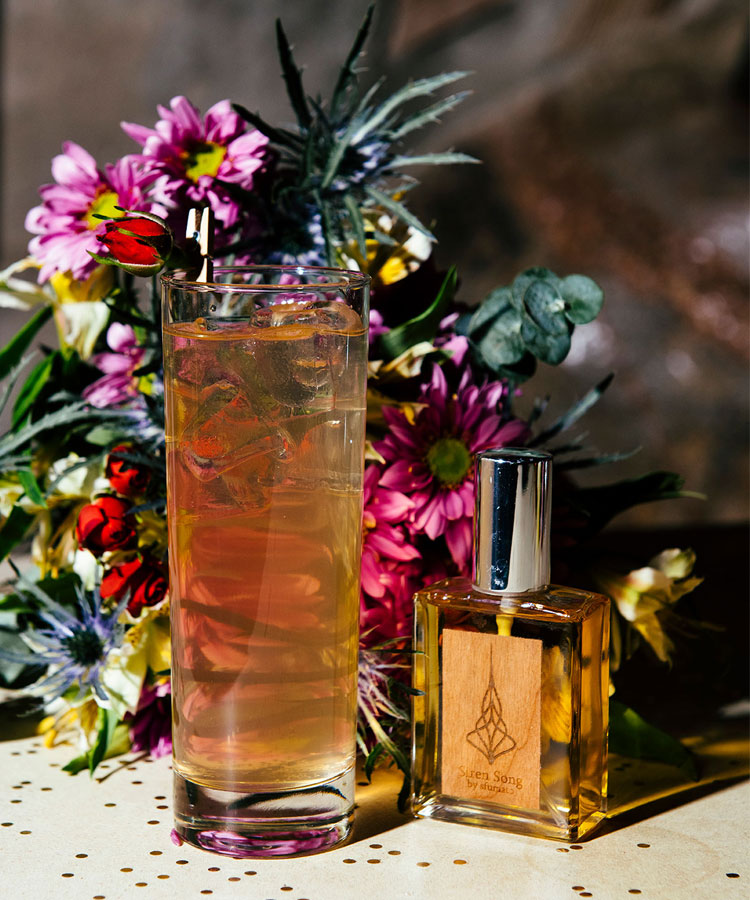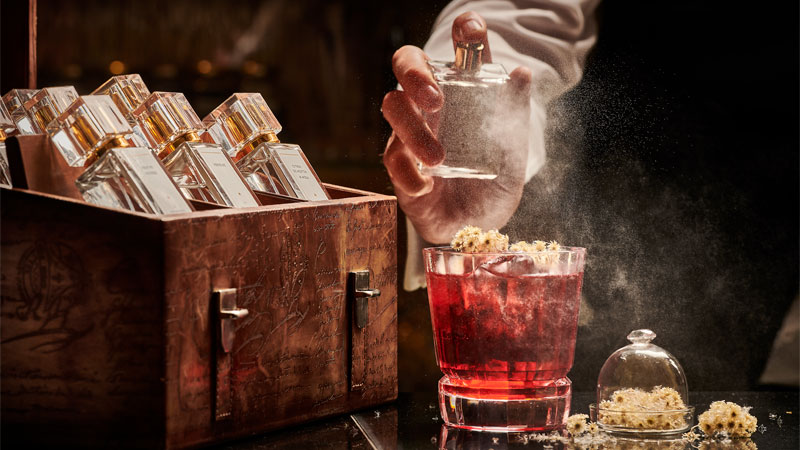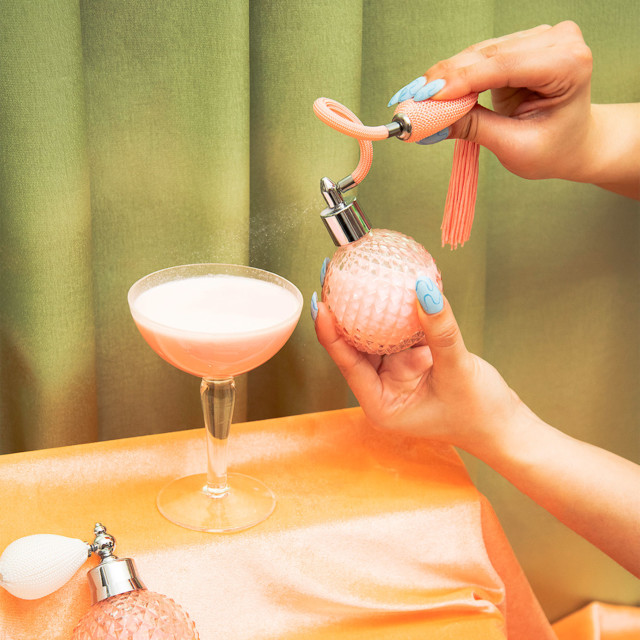A good perfume has the ability to evoke emotion. It captures an olfactory impression and can connect you to a feeling, memory, or moment passed. A good cocktail can do the same. And given that taste, or what we perceive as taste, is actually a blend of sensory experiences, the concept of perfume-inspired cocktails is becoming less novel and gaining popularity on the bar scene. These days, bartenders are turning their attention to these scent-enhanced cocktails to give drinkers a unique 360 sensorial experience.
At the Detroit-based cocktail bar Castalia, owners Kevin Peterson and Jane Larson use their background in perfume as a unique lens with which to develop cocktails. After starting Sfumato Fragrances in 2017, Peterson became intrigued by a scent’s ability to enhance the flavor of a drink and by the many similarities between both the ingredients and impressions created by cocktails and perfumes.
Each of the cocktails and alcohol-free drinks on Castalia’s menu is created to be paired with one of Sfumato’s eight fragrances in order to showcase the harmony between flavor and fragrance. “When I pair a cocktail to a scent, I want the sensory impression of the drink and fragrance to overlap,” says Peterson. “The overlap could be some of the aroma components, such as a rosemary scent paired with a gin-forward cocktail. In this case, the dominant molecule alpha-Pinene is found in both the rosemary and the juniper elements of the gin.”
Castalia’s beverage menu was created to evoke all five senses and each drink is served alongside its accompanying scent on a scent strip. For example, the Call of Curiosity, Castalia’s riff on a Gin and Tonic, features a house-made tonic that is made with a number of botanicals found in its paired fragrance, Siren Song.

“Customers are often surprised by just how much the fragrance pairing changes the experience of the cocktail,” says Peterson. “I tell people to try a sip of the drink without the scent, then take another sip while smelling the scent.” When sipped in this fashion, the scent is perceived as part of the cocktail and often changes the experience of the beverage. “It can push the drink into different flavor realms, highlighting different notes of the cocktail flavor and bringing out nuances that aren’t apparent without the scent,” he says.
Across the globe in the home of perfumery, Emanuele Balestra, bar manager at Bar du Fouquet’s, Cannes at Le Majestic Hotel in France, is taking a similar approach to fragrance cocktails. Through his beverage program, Balestra deconstructs every aspect of each cocktail to push the boundaries of the sensory drinking experience.
While Peterson and Larson focus on highlighting the flavor components of spirits with aromatics, Balestra’s menu spotlights cocktails’ non-alcoholic ingredients. “At the core of the recipe is the perfume which complements the cordials, bitters, and tinctures used for each drink,” he says. The fact of the matter is, what we smell directly affects what and how we taste. On its own, the tongue can only detect five flavors: sweet, bitter, sour, salty, and umami. But when combined with the sense of smell, the brain is able to decipher the intended flavors of foods and drinks.
“By adding a perfume inside the glass and all over the glass, the ingredients are enjoyed by the olfactory senses as well as the taste buds; the smell amplifies the taste,” he says.

Balestra’s cocktails are driven by science and are created to optimize the plants, flowers, and citrus grown in the hotel garden. In his cocktail lab, Balestra uses rotovap technology to break down the molecular structure of ingredients. This allows him to extract the essence of plants and liquify them to assemble new flavor profiles. The result is a range of edible perfumes that act as the backbone for each cocktail on his expertly crafted beverage list.
For his guests, this scientific process becomes part of an interactive presentation. “Once the drink is served, the server finishes the cocktail at the table with the perfume,” Balestra says. Guests are then asked to place their hands on either side of the glass, and the perfume is sprayed three times inside the glass and then twice on their hands. “This ensures that the scents last throughout the full drinking experience,” he says.
With the ever-evolving nature of the craft cocktail scene and drinkers’ desire for more unique cocktail experiences (and Instagram-worthy photo evidence), perfume cocktails may just become the next viral trend. “Scent has the ability to dramatically call up memories, elicit emotions, and change the tone of a drink,” says Preston. “With that in mind, it has the potential to be a very powerful tool in a bartender’s toolkit.”
